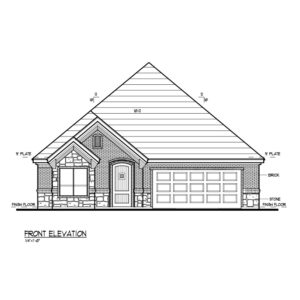Obtaining a construction loan for your project is an important step towards turning your vision into reality. However, before the construction can commence, you must navigate the permit process. Securing the necessary permits is a vital part of any construction project, ensuring compliance with local regulations and building codes. This article sheds light on the permit process involved in obtaining a construction loan, guiding you through the essential steps to ensure a smooth and successful project.
Understanding the Permit Process:
The permit process is a series of steps that must be followed to obtain the necessary approvals from local authorities before starting construction. These permits ensure that your project complies with zoning laws, building codes, safety regulations, and environmental requirements.
Research Local Requirements:
Begin by researching the specific permit requirements for your location. Each municipality or jurisdiction may have its own set of regulations, permit types, and application procedures. Contact the local building department or permitting office to obtain the necessary information and documents required for your construction project.
Preparing Documentation:
Compile all the necessary documentation to support your permit application. This typically includes architectural drawings, engineering plans, site surveys, environmental impact assessments, and any other relevant documentation as required by local authorities. Ensure that your plans meet all the building code requirements and are prepared by licensed professionals, if necessary.
Permit Application Submission:
Submit your permit application to the appropriate local authority, typically the building department or permitting office. Pay the required application fees and provide all requested documentation. Double-check that your application is complete, accurate, and includes any additional information or forms required by the permitting office.
Review and Approval Process:
Once your permit application is submitted, it undergoes a review process by the local authority. This review ensures compliance with building codes, zoning ordinances, and other regulations. The review process may involve multiple departments, such as planning, fire safety, environmental health, and structural engineering, depending on the nature of your project.
Permit Issuance:
If your application meets all the requirements and passes the review process, you will be issued the necessary permits to commence construction. These permits typically include building permits, electrical permits, plumbing permits, and mechanical permits, depending on the scope of your project. Ensure that you receive the permits in writing and keep them readily accessible at the construction site.
Inspections:
During the construction process, inspections will be conducted at various stages to ensure compliance with the approved plans and building codes. These inspections may include foundation inspections, framing inspections, electrical inspections, plumbing inspections, and final inspections. Schedule inspections as required and ensure that the work meets the required standards before proceeding to the next stage.
Compliance and Completion:
Throughout the construction process, it is essential to adhere to the approved plans, follow building codes, and address any concerns raised during inspections. Failure to comply with permit requirements can result in delays, fines, or even the suspension of construction activities. Once construction is complete and all required inspections are passed, you can proceed with the next steps of your project, such as transitioning to long-term financing or occupancy.
Navigating the Permit Process
Navigating the permit process is a critical aspect of obtaining a construction loan and ensuring a successful construction project. Researching local requirements, preparing comprehensive documentation, submitting a complete application, and complying with building codes and regulations are essential steps to secure the necessary permits. By understanding the permit process and working closely with local authorities, you can streamline the process, mitigate delays, and ensure compliance, ultimately bringing your construction project to fruition.
Are you a lender who wants a free or premium listing on LendDing? Get started today!
Or Contact Us if you have a loan inquiry or question.














